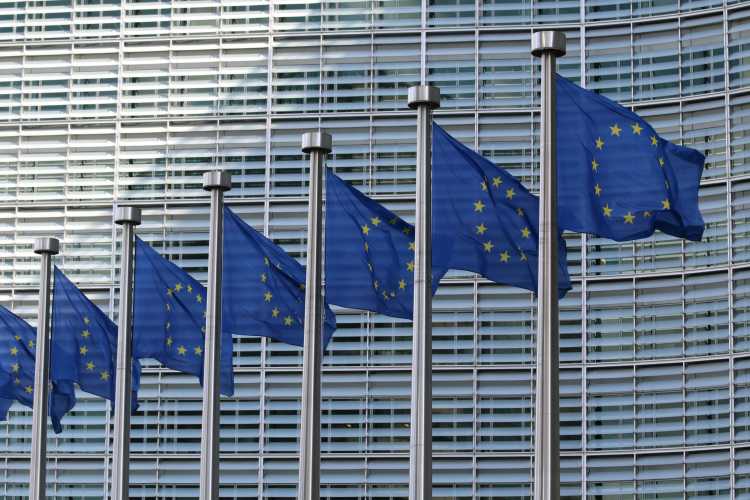
As the European Union (EU) advances its ambitious climate agenda, its Carbon Border Adjustment Mechanism (CBAM) is set to reshape global trade dynamics, especially for countries with carbon-intensive industries like India. CBAM, designed to counteract carbon leakage, imposes a carbon tariff on imports of certain goods into the EU. This policy, while heralded as an essential step toward climate neutrality, has raised concerns in India, particularly for its steel industry, which faces high production costs and international trade challenges. India’s government and industry stakeholders are now navigating this new policy landscape, balancing climate commitments with the imperative of safeguarding its industries.
The CBAM aims to create a level playing field by imposing a carbon price on imports equivalent to the one EU manufacturers face under the Emissions Trading System (ETS). The goal is to prevent “carbon leakage,” where EU firms might shift production to countries with less stringent carbon pricing, or consumers may choose imports from these regions due to lower prices. Initially affecting sectors like steel, cement, and aluminium, CBAM is a part of the EU’s “Fit for 55” initiative, aiming for a 55% reduction in greenhouse gas emissions by 2030, with ultimate climate neutrality by 2050.
READ | RCEP or restraint: India’s trade dilemma and the China conundrum
Retaliatory tariffs and strategic assessments
CBAM introduces new regulatory requirements for exporters to the EU. During its transitional phase, companies must report embedded emissions data. Full implementation will follow in 2026, obliging importers to purchase CBAM certificates reflecting these emissions. This mechanism aligns with the EU’s internal carbon pricing, effectively imposing similar climate-related costs on non-EU producers. For India, the steel industry, with its significant emissions footprint, faces immediate challenges as the EU is a major market for Indian steel exports.
India’s reaction to the EU’s policies on steel tariffs and CBAM has been one of caution and strategic retaliation. Since 2018, the EU has imposed a tariff rate quota (TRQ) on steel imports, affecting around $4.4 billion in Indian exports and leading to substantial revenue losses. In response, India has notified the World Trade Organisation (WTO) of its intent to implement retaliatory tariffs on EU goods. The Indian government has indicated it will likely impose higher tariffs on finished goods rather than raw materials, avoiding adverse impacts on domestic industries reliant on EU imports. Such a policy aligns with India’s strategic interest in protecting its industries while pressuring the EU to reconsider its restrictive trade policies.
‘A unilateral and arbitrary measure’
Finance minister Nirmala Sitharaman has expressed strong opposition to CBAM, calling it a “unilateral” and “arbitrary” trade barrier that unfairly penalises countries like India, which are diligently working toward climate goals. She argues that CBAM could disrupt global supply chains and put additional strain on countries already investing heavily in green transition costs. India’s concerns have been voiced during negotiations for a Free Trade Agreement (FTA) with the EU, but the issue remains unresolved.
The Indian government’s contention is that CBAM, though labelled as a green initiative, could conflict with WTO principles due to its discriminatory nature. The mechanism penalises Indian steel for its “dirty” emissions profile, while EU producers continue manufacturing similar products under domestic subsidies. This inequity challenges India’s climate commitments and threatens its economic stability.
Challenges for India’s steel industry
CBAM’s reporting and certification requirements present considerable challenges for Indian steelmakers. The EU’s demand for granular emissions data necessitates a costly overhaul of existing monitoring systems to meet compliance standards. During CBAM’s transitional phase, importers must report emissions, but from 2026, financial adjustments will come into play. Importers of Indian steel will need to purchase CBAM certificates proportional to the carbon intensity of the goods, raising costs that could diminish India’s competitive edge.
For India’s steel sector, which operates with a carbon intensity three times the global average, this poses a significant cost burden. Moreover, the sector may face competitive disadvantages as EU importers shift to domestic or other low-emission suppliers. This change could lead to declining export revenue, production cuts, and, potentially, job losses. The steel industry will need to adapt rapidly to mitigate these impacts, a process complicated by high decarbonisation costs and limited technological capacity.
India’s strategy to cushion CBAM impact
India’s response to CBAM requires both domestic and international strategies. Domestically, India can invest in cleaner steel production technologies and incentivise low-carbon practices. The government’s push for green hydrogen, renewable energy, and emission reduction technologies offers a roadmap for reducing the steel industry’s carbon footprint. However, achieving meaningful progress will require substantial financial support and policy reforms.
Internationally, India has options for contesting CBAM within the WTO, arguing that the policy is not WTO-compliant and conflicts with principles of fair trade. A coalition with other affected nations could strengthen India’s position, pressing for climate policies that do not hinder the growth of developing economies.
CBAM’s introduction signals a shift in global trade where climate policies increasingly influence economic interactions. While the mechanism may threaten India’s steel industry, it also presents an opportunity to accelerate domestic climate action. India can leverage CBAM as a catalyst for transformation, driving its steel industry toward lower emissions and greater sustainability. Although the path will be challenging, proactive investment in green technology and strategic trade negotiations could enable India’s steel industry to navigate this new era of climate-conscious trade.
In the short term, India’s steel industry will face significant challenges, including compliance costs, potential revenue losses, and increased competition. However, if India successfully adapts to these pressures and establishes itself as a leader in sustainable steel production, it could ultimately turn CBAM into an opportunity for long-term growth and resilience. The road ahead demands close cooperation between the government and the private sector, targeted investment in clean technology, and a strong negotiating stance to protect India’s interests on the global stage.
